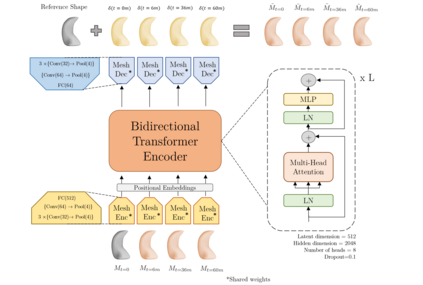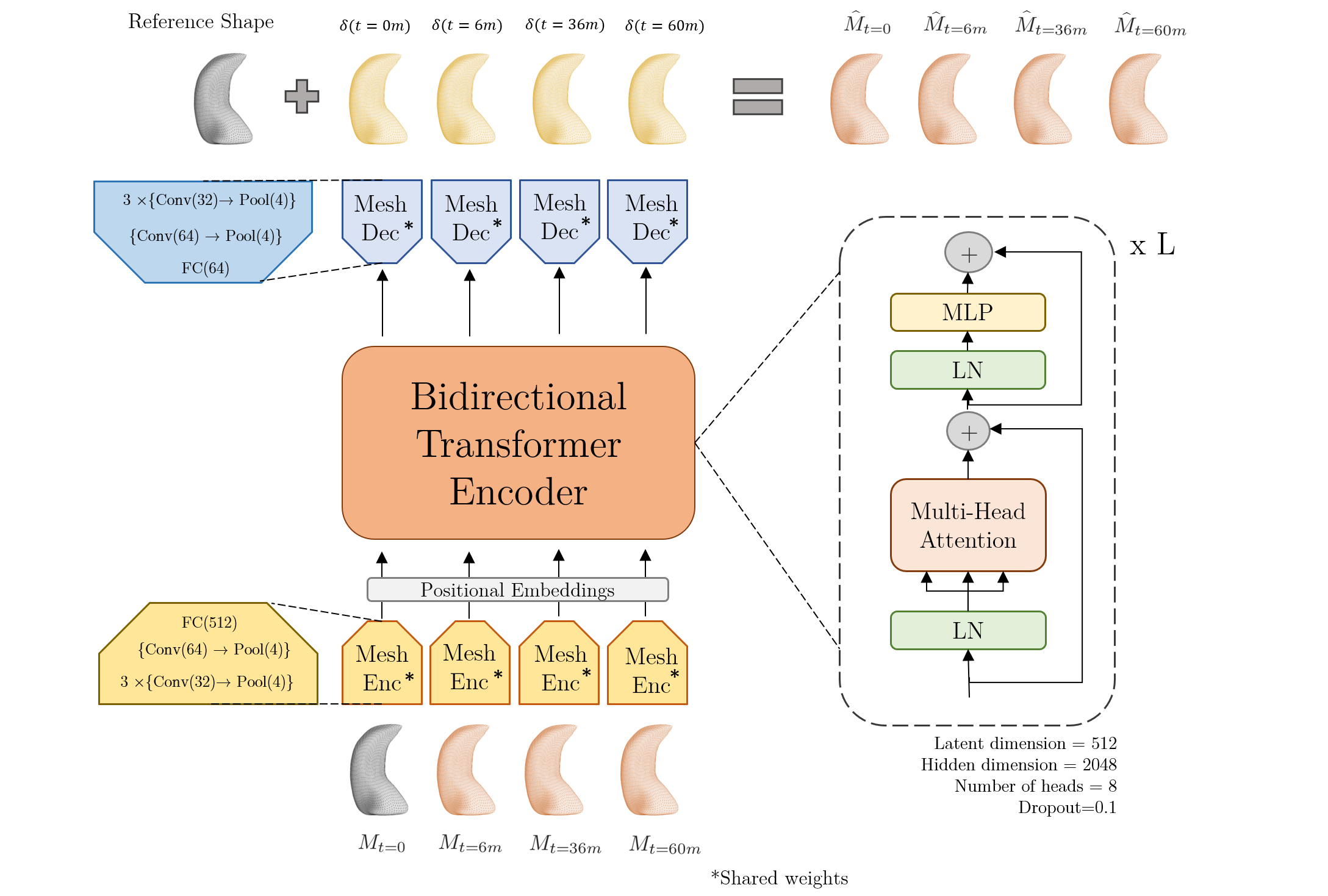The longitudinal modeling of neuroanatomical changes related to Alzheimer's disease (AD) is crucial for studying the progression of the disease. To this end, we introduce TransforMesh, a spatio-temporal network based on transformers that models longitudinal shape changes on 3D anatomical meshes. While transformer and mesh networks have recently shown impressive performances in natural language processing and computer vision, their application to medical image analysis has been very limited. To the best of our knowledge, this is the first work that combines transformer and mesh networks. Our results show that TransforMesh can model shape trajectories better than other baseline architectures that do not capture temporal dependencies. Moreover, we also explore the capabilities of TransforMesh in detecting structural anomalies of the hippocampus in patients developing AD.
翻译:与阿尔茨海默氏病(AD)相关的神经诊断性变化纵向模型对于研究该疾病的发展过程至关重要。 为此,我们引入了TransforMesh,这是一个基于变压器的时空网,该变压器建模长纵向形状改变3D解剖藻类。虽然变压器和网目最近显示自然语言处理和计算机视觉方面的令人印象深刻的性能,但其在医学图像分析中的应用非常有限。据我们所知,这是将变压器和网状网络结合起来的首项工作。我们的结果显示,TransforMesh可以比其他不捕捉时间依赖性的基线结构更好地模拟轨迹。此外,我们还探索了TransforMesh在发现正在发育AD的病人的河马峰结构异常方面的能力。








